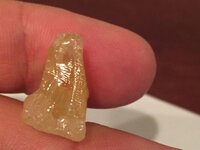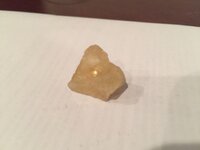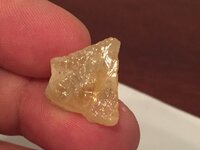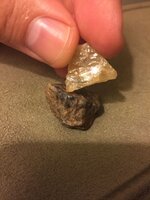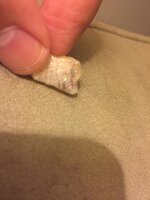ncuke
Jr. Member
- May 24, 2013
- 66
- 68
Not sure where I found this, but it was very clear and I recall wanting to keep it. Got my kid a scratch test kit for Christmas and we just broke it out the other day and practiced with what came in the kit. We then practiced on some stones we found and I cannot get anything to scratch this one rock - it scratches everything and pretty sure it is scratching the piece of corundum that came with the kit, but not positive. Leaves no color streak - just a carved line. So my mind wanders... it has very fine striations - tried to capture in the pic - almost like a fingerprint. Triangle shape also? Thoughts on sight alone?
